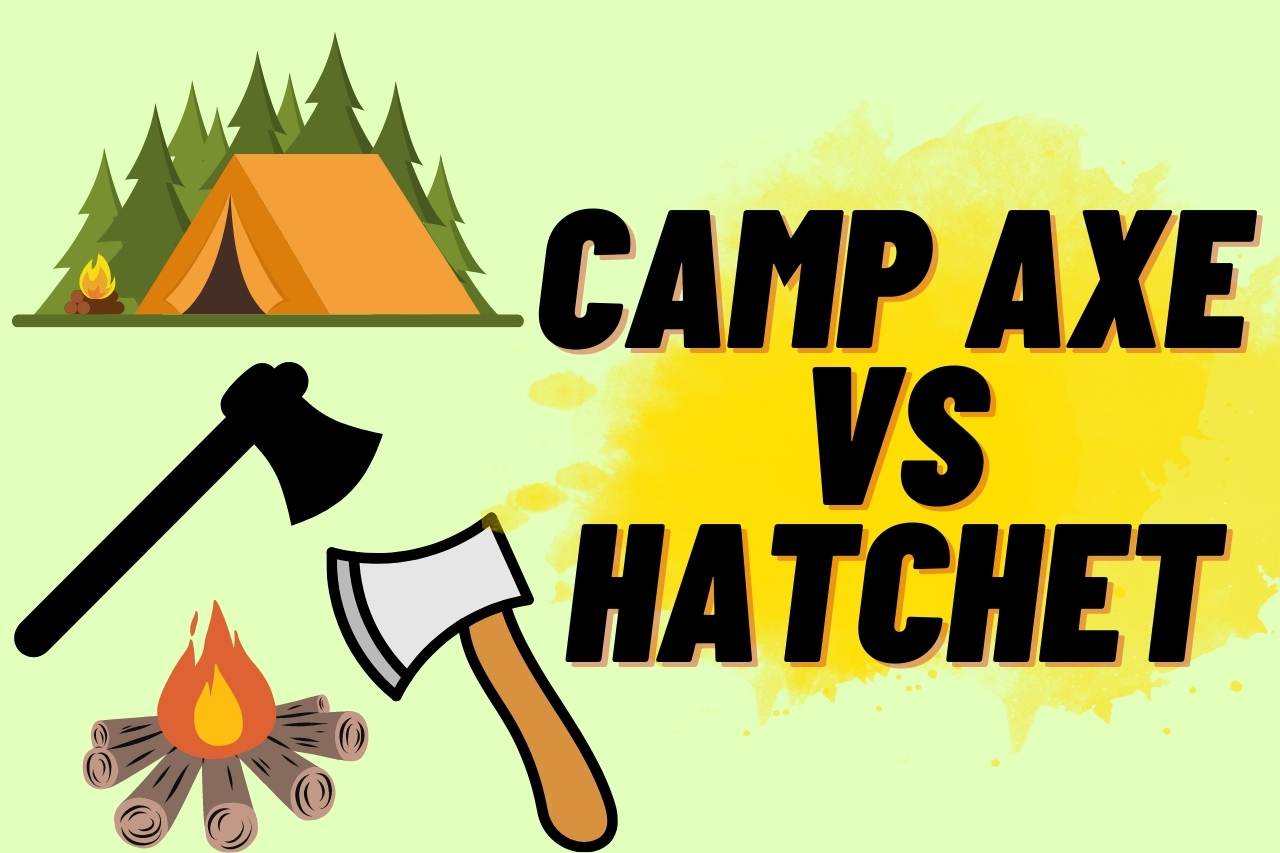Camp Axe vs Hatchet ; Comparison Guide
No matter where you reside, a cutting tool is needed in the shed for chopping wood or working on DIY wood projects. Axes and saws have been among the various tools introduced to camps throughout many years. However, several new campers have been puzzled about the distinctions between the camping axe and hatchet. Choosing between a camp axe and a hatchet may be necessary if you want to gather and cut firewood. And also, which one is best, camp axe vs hatchet? We have outlined the main distinctions between axes and hatchets in terms of look, design, and application to help you choose the best instrument.
What is a Camping Axe?
Axes, hand axes, camping axes, and hand tools all refer to the same thing. Because they are portable, composed of light wood and sturdy bronze or iron blades, campers frequently use them. This axe is often unsuitable for hard lifting, chopping thick ropes, or other demanding tasks. As a result, it excels in cutting, piercing, trimming branches, and other tasks.
What are the Benefits of Camp Axe?
For camping, a hatchet vs. an axe. Why may you decide to use an axe?
- A camp axe’s swing is longer. It enables you to split larger chunks of wood and provide additional leverage. Additionally, it makes them better suited to cutting downed timber, though a saw would be much better.
- An axe often has a heavier head than a hatchet in addition to the longer swing. It has more weight, providing momentum as it hits the wood. In many cases, splitting wood requires minimal effort since the pendulum effect takes care of everything.
- Anything that requires throwing a sharp, heavy piece of metal or wood through the air might be hazardous. Axes demand a two-handed grip, which makes swinging at the wood you’re splitting safer and more precise.
What is a Hatchet?
Generally speaking, for camp axe vs hatchet, a hatchet is a small version of a little axe. While hatchets are fundamentally different from knives in that they are smaller, more compact, and have thinner shafts with curved and grooved blades. Most hatchets feature a V-shaped blade cut that distinguishes them from other axe kinds.
The tool’s modest length makes it ideal for cutting tiny pieces of wood and carrying it in a backpack when trekking and camping. A hatchet gets also referred to as a hand axe.
What are the Benefits of Hatchet?
- Hatchets are more effective in cramped spaces and need less swing. It is also the best option if you need to operate within the presence of people because you can easily regulate your safe area instead of using a big axe.
- Hatchets are lighter and simpler to carry than a wood-splitting axe.
- A hatchet is much more appropriate than a camping axe if you want to stroll into camp or if there is limited space.
- When deciding what to pack for a camping trip, you’re much more likely to bring something multipurpose than anything with a single function. On the back of the axe head, hatchets frequently feature a hammerhead. Since they may get used as several tools, you won’t need to carry as much gear.
- When you go camping, the timber you want to gather is typically already about the appropriate size to burn. You frequently need a tool that can break down the sawn wood into bits that are small enough to burn easily as kindling. A smaller axe, such as a hatchet, is more suited to breaking smaller logs.
What are the Similarities Between Camp Axe vs Hatchet?
Many people mistakenly believe that hand axes and hatchets are interchangeable instruments due to their striking similarities. Two main similarities cause this misconception:
- A hand axe and a hatchet are used to chop wood, respectively.
- Both tools have a steel tip with a sharp edge linked to a hardwood or composite handle per their conventional construction.
Hatchets and hand axes are two different tools, even if they have a similar appearance and serve the same fundamental purposes. Therefore, it’s important to comprehend the variations between hand axes and hatchets.
Camp axe vs Hatchet – Differences
Now that we’ve cleared things up let’s compare how the two fare regarding factors like weight, head, and shaft.
-
Weight
Compared to hatchets, ordinary axes are larger and heavier. The axes’ higher weight enables you to strike more forcefully. The hatchet, on the other hand, is simpler and more suited for outdoor use. A hatchet weighs between one and three pounds, but an axe often weighs more than three pounds.
-
The Head
Most people see numerous similarities between the axe and hatchet heads. But if you pay attention, you can see the distinctions. An axe’s head typically measures 5 to 7 inches, with a fairly short cutting edge.
In contrast to hatchets, the head of an axe is wedge-shaped without any V-shaped cuts. To be able to cut through even the thickest wood, the majority of axe heads go constructed from hefty metal. This axe component is removable, allowing you to swap out a damaged head or handle at any moment.
The hatchet’s blade is substantially shorter and has a longer, thinner, tapered point. The hatchet head is permanently attached to the handle. Therefore longevity is ensured by using heavy-duty metal for the head.
-
The Shaft
The hatchet is typically thought of as a one-handed tool. The hatchet is significantly smaller than other axes, measuring about 12 to 18 inches. On the other hand, a normal axe has a lengthy shaft that ranges from 18 to 34 inches. Some smaller axes, nevertheless, have shaft lengths similar to hatchets.
Final Thought
To sum up, now you might already decide which one is best for your use. Two tools—a camping axe and hatchet—are advised for survival in camps. Using the branches of nearby trees, shrubs, leaves, and other resources, you may chop, divide, or construct tiny camps. The only thing you need to keep in mind is which one best matches your tool-handling abilities.
You May Also Like

Hi there, I’m Chathuranga, a travel enthusiast, web developer, and the chief editor of Visitminds.com. Traveling around the world, and experiencing different types of cultures, hotels, and destinations is my passion and I will put my best foot forward to share my knowledge on Visitminds.com via exciting blog posts to make you a pro traveler. Let’s do this!




![What is Less Expensive Flying to Jamaica or Cancun? [Best Tips]](https://visitminds.com/wp-content/uploads/2023/03/what-is-less-expensive-flying-to-jamaica-or-cancun-768x512.jpg)


